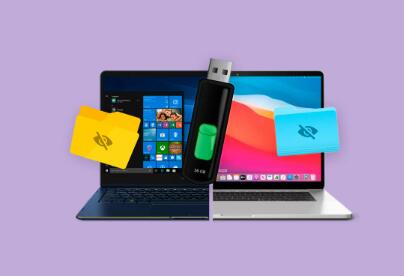Yes, your employer may be able to see if you copy files to a USB drive, depending on the monitoring systems in place.
1. USB Activity Monitoring:
Many organizations use software that tracks USB activity. This software can log events such as:
When a USB drive is plugged in.
What files are copied to or from the USB.
File sizes and names.
User actions such as deleting, modifying, or accessing files.

2. Audit Logs on Company Devices:
Most companies with a structured IT setup use audit logs to track activity on employee computers. These logs can capture:
File transfer events (including which files were transferred to external devices).
Device usage logs that show which USB devices were connected, when, and for how long.
This is part of endpoint security measures to prevent data breaches, IP theft, or other malicious actions.
3. Data Loss Prevention (DLP) Systems:
Advanced security solutions like DLP software monitor and control data transfer across the company network. They can:
Block file transfers if certain rules are triggered (e.g., transferring sensitive company files).
Send alerts to the IT department if suspicious activity is detected, such as transferring a large number of files or sensitive documents.
Some DLP tools can also encrypt files so they can’t be read if copied outside the organization.
4. Network Activity Monitoring:
Even if your computer is not actively connected to the internet while copying files, when you reconnect, the logs can still be synchronized to the network for later review. Network monitoring tools may capture data related to external file transfers to USB devices.
5. Company Policies:
Organizations often have strict data security policies that explicitly prohibit or regulate copying files to personal devices. Employees are generally required to use company-approved cloud services, shared drives, or other methods for data transfer. Violating these policies can result in disciplinary action, and monitoring tools help enforce these rules.
6. IT Department Oversight:
In some cases, IT personnel might have access to real-time monitoring systems that alert them when files are transferred to USB drives. Even if files are copied outside working hours, the system logs are typically available for review.
7. File Metadata:
Even if a company does not have sophisticated monitoring tools, metadata such as file creation dates, modification logs, and access times can provide evidence of when a file was transferred or accessed. If necessary, IT professionals can conduct a forensic analysis to check for such activities.
Ways Employers Monitor USB Usage:
Software Solutions: Monitoring software like Veriato, Teramind, or Symantec can track USB activities.
Group Policies: Windows Group Policy settings can log any connection to a USB device.
Operating System Tools: Windows Event Viewer or similar tools on other operating systems log USB connection events.
What If Monitoring Is Not in Place?
If your company doesn’t actively monitor USB activity, you might be able to transfer files without immediate detection. However, it’s important to consider the long-term risks:
Random Audits: Audits of your device’s activity can still reveal the transfer after the fact.
Legal and Ethical Implications: Transferring sensitive or proprietary data without permission may violate company policies or even laws like the General Data Protection Regulation (GDPR) or intellectual property rights.
In a well-managed IT environment, copying files to a USB drive is highly likely to be detected through monitoring tools, audit logs, and DLP systems. Even in the absence of direct monitoring, forensic analysis can reveal such activity later.
About us and this blog
Panda Assistant is built on the latest data recovery algorithms, ensuring that no file is too damaged, too lost, or too corrupted to be recovered.
Request a free quote
We believe that data recovery shouldn’t be a daunting task. That’s why we’ve designed Panda Assistant to be as easy to use as it is powerful. With a few clicks, you can initiate a scan, preview recoverable files, and restore your data all within a matter of minutes.
Subscribe to our newsletter!
More from our blog
See all postsRecent Posts
- Reformat external hard drive from mac to pc 2025-01-20
- i can’t see my secopnd hard drive on my mac 2025-01-20
- How to reformat external hard drive for mac and pc? 2025-01-20










